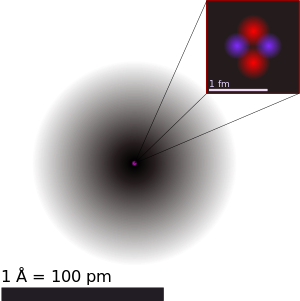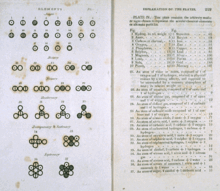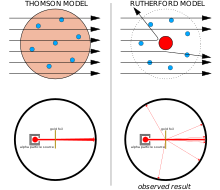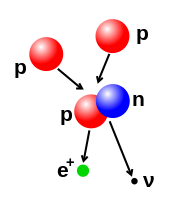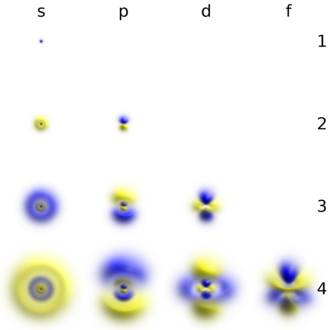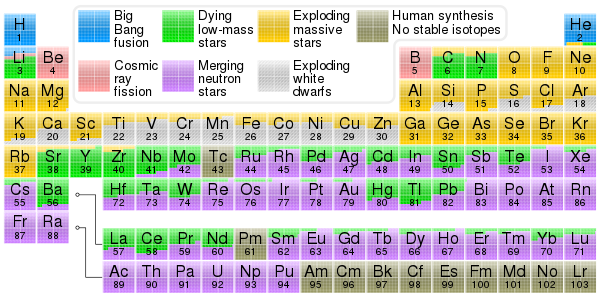ফেসবুকটি বিনামূল্যে নয়
ফেসবুক নিখরচায় নয়
ইন্টারনেটের অনেকাংশের অর্থনীতি দুটি মূল্যবান সামগ্রীতে নির্মিত: আপনার সময় এবং আপনার সামগ্রী
এই শরত্কালের শুরুর দিকে ফেসবুক যখন তার ইন্টারফেস পরিবর্তন করেছিল, তখন সোশ্যাল নেটওয়ার্কগুলি ব্যবহারকারীদের মন্তব্যে প্রকাশিত হয়েছিল যে তারা সাইটে যেভাবে নতুন তথ্য উপস্থাপন করা হচ্ছে তাদের কতটা ঘৃণা ছিল। লোকেরা বিরক্ত হয়েছিল যে ফেসবুক তার কয়েক মিলিয়ন ব্যবহারকারীর কথা বিবেচনা না করেই কাজগুলি করছে। সেই ক্ষোভ আমার কাছে বোধগম্য হয়েছিল। যে বোঝা যায়নি তা হ'ল বিপুল সংখ্যক লোক যারা এই পরিবর্তনের সাথে প্রতিক্রিয়া জানিয়েছিল, "চুপ কর! এটি নিখরচায়।" এটি মূলত ভুল।
ফেসবুক নিখরচায় নয়। সাইটে যোগদানের জন্য আপনাকে অর্থ দিতে হবে না, তবে আপনি ফেসবুককে এমন দুটি জিনিস দিয়েছেন যা অনেক বেশি মূল্যবান: আপনার সময় এবং আপনার মেধা সম্পত্তি। ফেসবুক আপনাকে বিনামূল্যে এটির সিস্টেমে অ্যাক্সেস দেয় কারণ এটি ফেসবুকের স্বার্থে আপনি সিস্টেমে সময় কাটান এবং লিঙ্কগুলিতে ক্লিক করেন। সুতরাং, আপনার সময় মূল্য? বেশ কিছুটা, যখন আপনি বিবেচনা করেন যে ফেসবুকে থাকা আপনাকে অন্যান্য কাজ থেকে বিরত রাখে। আপনি আপনার ছাদ প্যাচিং বা আপনার গাড়ি ধোয়া হতে পারে। ফেসবুকে পর্যাপ্ত সময় ব্যয় করুন এবং আপনার পক্ষে সেই জিনিসগুলি করার জন্য আপনি অন্য কাউকে অর্থ প্রদান করতে পারেন। অবশ্যই, আপনি সেই সময়টি আপনার পরিবারের সাথে কাটাতে পারেন। এমনকি আপনি নতুন ব্যবসায় শুরু করতে সেই সময়টি ব্যবহার করতে সক্ষম হতে পারেন।
এই জিনিসগুলি আপনার সময়টি আপনার পক্ষে মূল্যবান কি তা নির্ধারণ করতে সহায়তা করে। তবে ফেসবুকের কাছে আপনার মূল্য কী? আবার, বেশ কিছুটা। ফেসবুক আপনাকে যে লিঙ্কগুলি উপস্থাপন করে তার উপর ক্লিক করে আপনি যদি সময় ব্যয় করেন, আপনি সেই বিজ্ঞাপনগুলি প্রদর্শন করার জন্য ফেসবুক যে মূল্য নিতে পারে তার মূল্য বাড়িয়ে তুলতে সহায়তা করছেন। আপনি যে লিঙ্কগুলিতে ক্লিক করতে পারেন তা প্রদর্শন করতে ফেসবুক খুব ভাল। যা এটিকে এত ভাল করে তোলে তা হ'ল ফেসবুকের সূত্রের অন্য দিক: আপনি যে ফেসবুকে ফ্রি সরবরাহ করেন সে সমস্ত সামগ্রী। উদাহরণস্বরূপ, যদি আপনার বিষয়বস্তুটি আপনাকে বিয়েতে জড়িত তা নির্দেশ করে তবে আপনি বাজি রাখতে পারেন যে আপনি বিবাহ ও একটি পরিবার শুরু করার সাথে সম্পর্কিত বিভিন্ন ধরণের বিজ্ঞাপন দেখতে পাবেন। সেই বিজ্ঞাপনদাতারা আপনাকে লক্ষ্য হিসাবে প্রিমিয়াম প্রদান করছে। এভাবেই আপনি ফেসবুককে মূল্যবান করে তোলেন।
এখন, এটি সত্য যে প্রচুর মানুষ কখনও ফেসবুক বিজ্ঞাপনগুলিতে ক্লিক করে না, তবে এর অর্থ এই নয় যে এই লোকগুলি ফেসবুকের কাছে মূল্যবান নয়। তাদের বেশিরভাগ এখনও এমন ধরণের সামগ্রী তৈরি করে যা ফেসবুক নিজে থেকে প্রকাশ করতে পারে না তবে এটি অন্য ব্যক্তিকে সাইটে আকৃষ্ট করার এবং তাদের সেখানে রাখার মূল চাবিকাঠি। আপনার পোস্ট করা স্ট্যাটাস আপডেট, আপনি আপলোড করা ছবি এবং আপনার সাথে লিঙ্ক হওয়া ভিডিও এবং অন্যান্য ওয়েব পৃষ্ঠাগুলি সাইটটিকে স্টিকি করার ক্ষেত্রে একটি ভূমিকা পালন করে। দ্য নিউ ইয়র্ক টাইমসের মতো সংস্থাগুলি প্রিমিয়াম কর্মীদের দ্বারা উত্পাদিত সামগ্রী সহ স্টিলিটি অর্জনে লক্ষ লক্ষ ব্যয় করুন; ফেসবুকে (এবং বেশ কয়েকটি অন্যান্য ওয়েবসাইট) আপনি সাইটে কী আনেন তার উপর সম্পূর্ণ নির্ভর করে। ফেসবুক আপনার পক্ষে আপনার নতুন বাচ্চার ছবিগুলি আপনার বন্ধুদের দেখতে দেওয়া সহজ করে তোলে, তবে প্রতিবার যখন আপনি এরকম কিছু করেন, আপনি ফেসবুক যা চান তা দিচ্ছেন: চোখের পাতা। এবং আমি ইতিমধ্যে উল্লেখ করেছি যে কীভাবে আপনার সামগ্রীটি ডিজিটালি মূল্যায়ন করা হয় যাতে ফেসবুক আপনাকে বিভিন্ন ধরণের বিজ্ঞাপনে ক্লিক করতে পারে। আপনি কেন মনে করেন যে those শিশুর ছবি পোস্ট করার পরে হঠাৎ আপনার সমস্ত লিঙ্কগুলি শিশুর ক্যারিয়ার এবং ডায়াপার বিক্রয়কারী সংস্থাগুলির কাছে প্রদর্শিত হয়েছিল?
ঠিক আছে, সুতরাং আসুন আমরা বলি যে আপনি কখনই কোনও সামগ্রী পোস্ট করেন না এবং আপনি আপনার বন্ধুদের কিছু স্থিতি আপডেটগুলি পড়ার জন্য মাঝে মাঝে সাইটে যান। নিজের উপর কঠোর হবেন না - আপনার এখনও ফেসবুকের চোখে মূল্য রয়েছে। আপনি যে বড় সংখ্যার ফেসবুক টাউট করতে পারেন তার একটি অংশ ((৫০ মিলিয়ন ব্যবহারকারী আমি সম্প্রতি শুনেছিলাম এমন চিত্র ছিল) এবং আপনি এখনও সামগ্রিক ট্র্যাফিকের অংশ যা ফেসবুককে এমন একটি প্রাণবন্ত স্থানের মতো দেখায় যা বিজ্ঞাপনদাতারা চায় একটি অংশ হতে।
ফেসবুক আপনাকে নগদীকরণ করেছে। এটি এমন একটি অবকাঠামোগত বিকাশ করেছে যা কেবলমাত্র আপনার সামগ্রীতে পোস্ট করে না, তবে সেই ধরণের বিষয়টিকে আপনার কীভাবে মনে হয় তা মূলত নির্ধারণ করতে মাইক্রোইনালাইজ করে এবং এটি বিজ্ঞাপনদাতাদের আপনাকে বিড করতে দেয়। আপনি গ্রাহক না পণ্য? এটি সম্পর্কে চিন্তা করবেন না; তুমি দুজনেই
বেশিরভাগ লোকেরা এগুলি সমস্ত কিছু বোঝে বলে মনে হয়, কমপক্ষে কোনও না কোনও পর্যায়ে। কয়েক সপ্তাহ আগে ফেসবুক ফাঁকি দেওয়ার বিষয়টি বিবেচনা করুন। গুজব ছিল যে ফেসবুক পরিষেবাটি ব্যবহারের জন্য ফি নেওয়া শুরু করবে। গুরুতরভাবে ছদ্মবেশ গ্রহণকারী লোকেরা ক্ষুব্ধ হয়েছিল। কেন? আমি মনে করি এটি কারণ আমরা সকলেই জানি যে আমরা ফেসবুকে কীভাবে বিনিয়োগ করেছি। Gmail এর মতো একটি বিনামূল্যে ই-মেইল সেবা বিশেষ করে চার্জিং শুরু, তাহলে এটির ব্যবহারকারীদের সুইচ করতে পারে ইয়াহু । ফেসবুক যদি বিনামূল্যে ব্যবহারের জন্য চার্জ করে তার ব্যবহারকারীদের (এর রুটি এবং মাখন) বিভ্রান্ত করতে থাকে, আমি আপনাকে প্রতিশ্রুতি দিচ্ছি যে গুগল তাদের রাখতে পছন্দ করবে। তবে এই লোকেরা বুঝতে পারে যে তারা ফেসবুকে অনন্য মূল্য তৈরি করেছে যা তাদের কাছে অমূল্য। ফেসবুক বিষয়বস্তু আপলোড করা মোটামুটি সহজ করে তোলে, তবে একই বিষয়বস্তু নিষ্কাশন করা অসম্ভবের পরে। আপনি কেবল আপনার সামগ্রী অন্য কোথাও স্থানান্তর করতে পারবেন না। ফেসবুকের পরিষেবাটি চার্জ করার ধারণার তীব্র প্রতিক্রিয়া থেকেই বোঝা যায় যে আমরা সকলেই জানি যে আমাদের সামগ্রীর দুর্দান্ত মূল্য রয়েছে এবং আমরা এটির আয়োজনে যে সময় ব্যয় করেছি তা মূল্যবান।
ফেসবুক অর্থনীতির একটি দুর্দান্ত উদাহরণ যা ইন্টারনেটের বেশিরভাগ অংশকে অন্তর্নিহিত করে। তবে এটি খুব কমই একা। সর্বাধিক লাভজনক ওয়েব সংস্থাগুলির বেশিরভাগ হ'ল "ফ্রি" সাইটগুলি যা বিজ্ঞাপন বিক্রি করে। তারা আপনার ক্লিকগুলি বিক্রি করে, যা সামগ্রিকভাবে কয়েক বিলিয়ন ডলারের সম্পদ তৈরি করে। আরও কী, ইউটিউব (একটি উদাহরণ নিতে) এর সামগ্রীর জন্য আপনার ভিডিওর উপর নির্ভর করে। অন্যান্য লোকেরা সময় এবং অর্থ তৈরি করতে ব্যয় করেছে এমন সমস্ত ওয়েবসাইটগুলিতে অ্যাক্সেস না থাকলে এর মূল সংস্থা গুগলের ব্যবসায়ের মডেল থাকবে না।
ফেসবুক, ইউটিউব, গুগল, লিংকডইন, রেডডিট ইত্যাদি সমস্ত সমৃদ্ধ সংস্থাগুলি কারণ লোকেরা "ফ্রি" এর জন্য তাদের নিজস্ব সামগ্রী ভাগ করতে পছন্দ করে। ইতিমধ্যে, নিউজ সাইটগুলি, যা বিশ্বজুড়ে সাংবাদিকদের রাখার জন্য কয়েক মিলিয়ন ডলার ব্যয় করে, প্রায়শই লড়াই করে বা এমনকি দেউলিয়া হয়ে পড়ে। সুতরাং, হ্যাঁ, ফেসবুক আপনাকে চার্জ নাও করতে পারে তবে এটি মুক্ত হওয়া অনেক দূরের। ফেসবুক আপনাকে এর পণ্য বানিয়েছে। আপনি কী দেখেন, আপনি কী পোস্ট করেন, কী বলেন আপনার আগ্রহ কী, আপনার বন্ধু কারা তার প্রতিটি দিক এটি স্লাইস এবং ডাইস করেছে। এটি আপনাকে নিয়ন্ত্রণ করতে নয়, আপনাকে সর্বোচ্চ দরদাতার কাছে বিক্রি করার জন্য, বড় ভাই হয়ে গেছে।
আসুন আমরা সকলেই স্বীকার করি যে এটি সত্য। সম্ভবত কোনও দিন এমনকি ফেসবুক নিজেই এটি স্বীকার করবে এবং আমরা "অর্থ প্রদান করা" গ্রাহক হিসাবে আমাদের প্রাপ্য গ্রাহক সমর্থন পাওয়া শুরু করব।
ইরা উইঙ্কলার ইন্টারনেট সিকিউরিটি অ্যাডভাইজার গ্রুপের প্রেসিডেন্ট এবং স্পাইস আমেন ইউ গ্রন্থের লেখক । তার সাথে যোগাযোগ করা যেতে পারে তার ওয়েবসাইট, আইরাভিঙ্কলার ডটকমের মাধ্যমে ।
